How To Set Up An Art Portfolio For College
Are you thinking about applying to an art program? Practice you know what you should include in your portfolio? Your art portfolio is usually the near important office of your application, and having a nifty one tin significantly improve your chances of getting into your peak schools. An art portfolio is a collection of your work, whether that's paintings, verse, sculpture, or another fine art form. It gives you the opportunity to show off your artistic skills, experiences and interests, and it helps admissions officers decide if you'd be a proficient fit for their school. Your portfolio is normally the most important part of your application because it lets schools encounter immediate the work you lot have created. Art portfolios are frequently needed to apply to art school or to an art program at a traditional college. There are a number of programs that may require applicants to submit a portfolio, some of which include: Not all students applying to these programs will demand to submit a portfolio. If you apply to an fine art schoolhouse, you lot will about likely exist required to submit a portfolio, simply traditional colleges sometimes do not require applicants to submit portfolios, depending on the programme they utilize to. Check the requirements of schools y'all may be interested in attending, and if ane or more of them requires submitting a portfolio of your work, read on to larn how to create a stiff portfolio. Art programs want to acknowledge students who create art in a skilled and memorable mode. More specifically, art schools are looking for students with the post-obit qualities: Peradventure the most obvious component colleges await for in your portfolio is how skilled an creative person you are. Technical mastery includes beingness able to apply basic and advanced fine art principals to your work, create work that shows a high level of attending and detail, and complete projects that are gratuitous of sloppiness and mistakes. Schools are likewise often particularly interested in your drawing skills considering many art forms crave the power to depict well. Most art programs recommend applicants submit at least cartoon in their portfolio, fifty-fifty if that is not their preferred fine art grade, and some schools, such as the Rhode Island School of Blueprint, require a drawing sample. While information technology is expected for students to take an art course they create most frequently and are most comfortable with, art schools want applicants who are stiff artists across a variety of media and art forms. One reason versatility is important is because the ability to create multiple art forms, from cartoon, to painting, to graphic design, and more, is a sign of a talented artist and one who tin apply their skills in multiple ways. It is too rare for an artist to stick exclusively to one art course. For example, artists who work with ceramics or in fashion design ofttimes need to exist able to describe accurate designs before they brainstorm their piece of work. Having a portfolio that shows variety also shows an ability to think creatively and a willingness to effort new things. Montserrat College of Art states on its admissions page that "Media exploration and experimentation are integral parts of your feel... Include work in your higher art portfolio that shows your area of involvement equally well as both realistic and abstruse piece of work using a variety of materials." The School of the Art Plant of Chicago (SAIC) states on its admissions page that the virtually important thing they look for in an art portfolio is "[Due west]ork that volition give us a sense of you, your interests, and your willingness to explore, experiment, and remember beyond technical art and blueprint skills." Your art portfolio should show your personality and your own fashion of looking at the globe. Y'all want to show art schools that there is a reason they should admit yous specifically, and one of the best ways to exercise this is by creating art that you are passionate about and that is unlike from what other people are creating. Technical skill is non enough if you can only copy what others take already created. Let's start creating! First of all, y'all want to brand sure that you requite yourself enough time to put your art portfolio together. Many art students accept at least a twelvemonth to create the pieces they use in their portfolio, so get-go thinking about your portfolio and preparing pieces well in advance of the deadlines. If you know what schools you want to apply to, inquiry their portfolio requirements advisedly and early on. If you don't properly follow each school'southward instructions, you risk getting automatically rejected, and at the very least it won't help your awarding. This is the most important piece of advice in this article! While researching the portfolio requirements of each school, pay particular attention to the post-obit information: Awarding and portfolio deadlines How you need to submit your portfolio (online, snail postal service, or in-person) If there are open up days or portfolio days when y'all can present your portfolio in person Number of pieces you should submit Any size requirements for the pieces You lot should also look at examples of previously submitted fine art portfolios. Especially when you are merely starting to create a portfolio, looking at the portfolios other students have created can be very helpful in developing your own portfolio. If you are currently in an art class, either at school or outside of information technology, your class probably has photos of portfolios previous students have submitted, and you tin can also ask your classmates about their portfolios. You tin too search online. Search "art portfolio example" or "[school you are interested in] art portfolio example". This volition bring up a lot of examples, oft including portfolios of students who were accepted into particular schools, such as Yale Academy'south art plan or the School of the Fine art Institute of Chicago. Call back to use these examples only as a guide; it's important your portfolio reflects your own talents and interests. You will demand virtually a dozen pieces of work for your portfolio. The number varies by school, but most request x-20 examples of your work. These can be pieces you created for a grade or exterior of schoolhouse. You should aim to create more pieces than you need, and then that when information technology comes time to create your portfolio, you can choose your strongest pieces to include. The pieces you include in your portfolio should besides have been created fairly recently. Near schools request that your submissions exist work you recently completed, and some require the pieces to have been completed within the past year or past few years. Hopefully your almost recent work will be your best anyway, since you take been learning more and improving. The strongest art portfolios volition have the following qualities: Different schools have different rules in terms of the number of fine art forms yous should submit. Some want you to focus on the art form you lot plan to study in college, while others want to see your work in a variety of art forms (such equally including some drawings and paintings, even if yous are applying for a graphic pattern plan). If you are submitting multiple art forms, unless otherwise specified, the most mutual art course(southward) in your portfolio should be the one(southward) you plan on studying in higher. However, even if yous are only submitting work from i art grade, you tin can show a great deal of variety within information technology, both in technique and field of study affair. An example of variety in subject thing is if you are submitting 15 photographs for your portfolio, those pieces can include photos of people, landscapes, however life, interiors, etc... You can brand sure your portfolio shows variety in technique past using multiple mediums within one art form. For instance, if you are merely submitting drawings, y'all tin can include color equally well equally black and white work, as well every bit drawings fabricated with dissimilar tools, such every bit graphite, pastel and charcoal. As mentioned before, having a portfolio that contains a lot of variety shows that you possess multiple skill sets and will be more than likely to succeed in the different classes you lot will be taking in art schoolhouse. Many art programs require or highly recommend including pieces created from direct observation. These are pieces created past observing real things around you. Directly ascertainment work can include portraits, self-portraits, landscapes, nonetheless life, rooms in your house, really anything you lot can see. Directly ascertainment does not include piece of work you created by looking a photograph or a copy of some other artist's piece of work. Straight observation is more challenging and requires more skill, so fine art schools are more interested in it. They as well want to come across how you draw the world around y'all. Many students don't include straight observation pieces in their portfolio, so doing this can actually help you stand out. Clara Lieu, a professor at RISD says that including pieces from direct observation "[W]ill distinguish your work from the crowd, and put yous calorie-free years ahead of other students." Unless the submission requirements country otherwise, you should attempt to include at to the lowest degree several examples of direct ascertainment in your portfolio. Most of these pieces are done every bit drawings, only other art forms tin can be used every bit well. Try to make these pieces equally true to life as possible. The fine art y'all produce should not just be copies of another creative person'south work. It should reflect your interests and talents. You want your portfolio to show what makes y'all special and to convince schools that they should accept y'all over other applicants. Producing original piece of work is a dandy way to stand out from the many portfolios art schools receive. There are multiple ways to show your personality and uniqueness in your portfolio. One way is to have your piece of work showcase a theme or technique that you are passionate near. Hopefully by now you have completed enough pieces that you know whether you lot prefer creating abstruse sculptures, collages that draw landscapes, portrait photography, or something entirely different. Non every piece you submit has to follow that theme, simply having a detail manner will assist your portfolio be memorable. You should as well try to call up outside the box while you create your portfolio. Equally a artistic type, this is probably something you are used to, but remember to continually button your boundaries when you are creating your portfolio. Taking a common subject area and portraying information technology in a unique way is a smashing way to show your originality. Below are some examples of creative interpretations of the drawing of a bike all students applying to the Rhode Island Schoolhouse of Pattern must submit. Source: Anna Maria Source: abussard Source: james303 Before you submit your portfolio, y'all want to exist sure that all your pieces are finished. Each slice should appear groovy with no smudges, rips, or wrinkles. The slice should also go all the way to the edge of the canvas or paper it is on. You by and large practice not want to include a lot of white groundwork unless you are submitting a crude sketch. Besides exist certain to include your name, schoolhouse, date of completion, and title of the slice on the back, as well as any other information the school requests, such as a short description of each piece. Once all the pieces are ready, ready them for presentation. Most art schools crave y'all to submit images or videos of your work online, simply some schools require applicants to mail service slides with images of the pieces or present their work in-person. If submitting your portfolio online: If y'all are submitting online, this will likely involve taking photos or videos of your work, unless you are submitting work created on the calculator, such equally graphic blueprint pieces, or are submitting pdfs of written work similar poetry. Spending time to take quality pictures and videos of your work is most as of import as creating quality art itself. These pictures or videos will often be the simply images admissions committees have of your work, and if they are poor quality, they may presume the work itself is poor quality as well. If the slice is a stationary work of fine art, a photograph, as opposed to a video, is usually sufficient. Follow these guidelines to have high-quality pictures of your work: Use a high-quality camera and natural lighting to ensure your photos resemble the original pieces as much every bit possible. Information technology'due south non necessary to rent a professional photographer to practice this, but you lot shouldn't be taking the photos from your phone either. If you don't ain a high-quality camera, inquire your art teacher if they take 1 you lot can infringe. Brand sure the lighting is even ( in that location should be no shadows in the background). The picture should be cropped appropriately, so that information technology shows the unabridged piece, just without a lot of extra background space. Some schools require you to prove the edges of each piece in photographs, and so over again, read requirements advisedly. The background should be a neutral colour, such every bit black, white, or grey. The picture should exist in focus, and the detail of the work should be visible. (Some schools allow a few additional item shots to exist included if there is a detail y'all particularly want to highlight.) No glare should be visible (remove works from frames if necessary). The colors in the picture should look like the colors of the original piece. If presenting your portfolio in-person: If mailing artwork or slides Your portfolio tin can benefit greatly when you ask others for their opinions on your work and the pieces you take selected for your portfolio. You should ask for feedback throughout your portfolio-making process. Two of the all-time sources for getting feedback are listed below. One of the first people you should inquire for their opinion on the pieces you should include in your portfolio is your art teacher. They oft have a lot of feel developing portfolios, and they tin help you choose the pieces that will best print admissions committees. The questions you inquire tin range from having them look over the pieces you've called for your portfolio to having them make suggestions on the type of piece of work you should create in club to finish your portfolio. National Portfolio Days are events held around the country where art students tin can learn nearly different art programs as well as bring their work to receive feedback on it from representatives of acme art schools and colleges. No admissions decisions are offered on National Portfolio Days; instead, they are a way for schools to look at your portfolio-in-progress and requite advice. They are an excellent opportunity to get feedback from schools you are considering applying to and to ask them specific questions about their portfolio requirements. It is a proficient thought to nourish first as a junior and get some early on feedback on your work, then attend again as a senior when y'all accept made more progress on your portfolio. Yous should definitely stop by the tables of schools you want to use to, but consider stopping by the tables of other schools also, as a review from any school gives yous valuable feedback. Read awarding requirements carefully for each school you programme on applying to. Ideally, give yourself at least a year to develop pieces for your portfolio. Brand sure your artwork is original and represents your skills and personality well. Try to attend a National Portfolio 24-hour interval to get valuable feedback on your work. How's your contour line drawing skill? Acquire the nuts of how to draw without shading with this guide. At present that you know how to create a portfolio, are you wondering what art programs you should apply to? Cheque out our guide on the best art schools in the U.s.a.! For a consummate overview of the college search procedure, read our comprehensive guide on how to choose a higher. Worried virtually paying for college? Read our step-by-step guide to getting a educatee loan. Want to ameliorate your Sabbatum score by 160 points or your ACT score by four points? We've written a guide for each test well-nigh the top 5 strategies yous must be using to have a shot at improving your score. Download it for complimentary now: 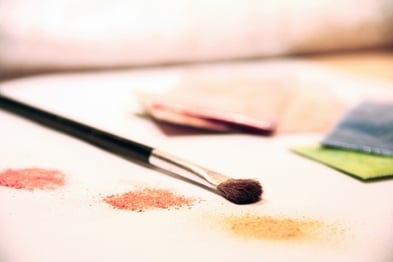
What Is an Art Portfolio?
Who Needs a College Art Portfolio?
What Practise Art Programs Look for in a Portfolio?
Technical Mastery:
Variety and Versatility:
Unique Style and Personality:
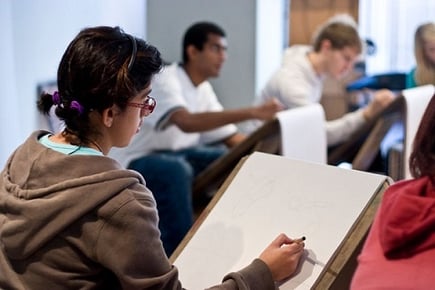
How to Create Your Art Portfolio
Getting Started
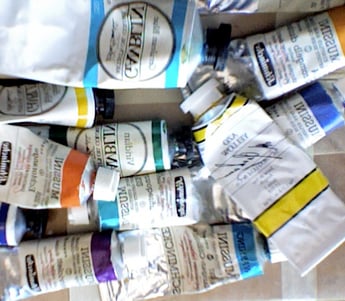
Choosing the Pieces
Prove the Breadth of Your Skills
Include Pieces From Straight Ascertainment
Show Your Originality
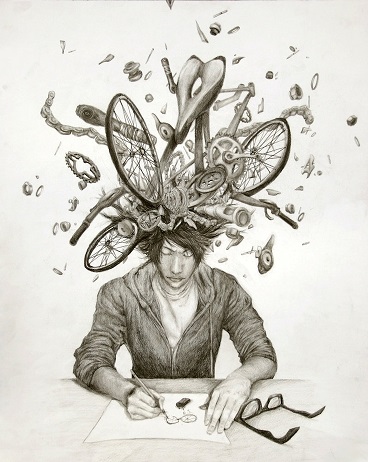
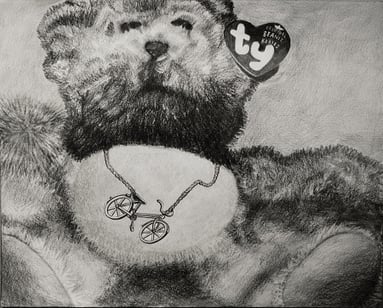
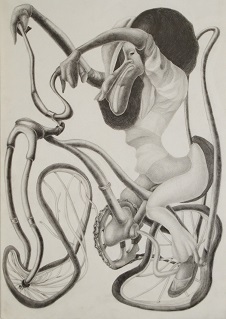
Final Steps
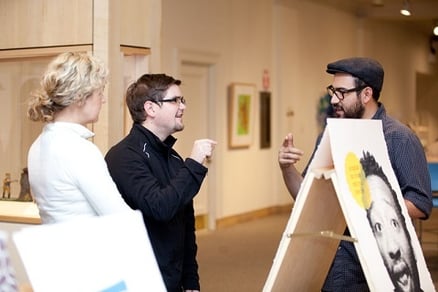 Asking others for feedback is a cracking way to improve your portfolio
Asking others for feedback is a cracking way to improve your portfolio Asking for Feedback
Your Art Teacher
National Portfolio Days
Points to Recall
What's Next?



Most the Writer
Christine graduated from Michigan Land University with degrees in Environmental Biology and Geography and received her Main'due south from Knuckles Academy. In loftier school she scored in the 99th percentile on the Sabbatum and was named a National Merit Finalist. She has taught English and biology in several countries.
How To Set Up An Art Portfolio For College,
Source: https://blog.prepscholar.com/how-to-make-an-art-portfolio
Posted by: pohllectifes.blogspot.com


0 Response to "How To Set Up An Art Portfolio For College"
Post a Comment